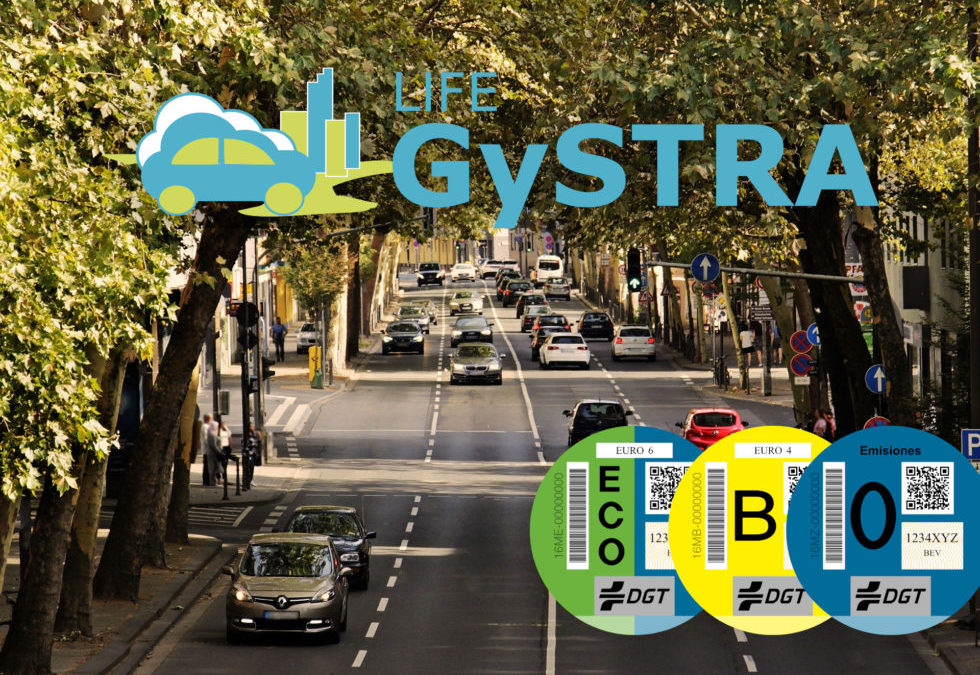The LIFE GySTRA project has concluded in a study that there are importante discrepancies between the theoretical emissions that a vehicle should have according to its environmental label and the emissions it actually has, which could make the General Directorate of Traffic (DGT) consider the possibility to modify the definition of these labels.
The environmental labels of vehicles are established by the DGT through a vehicle classification system based on their pollutant potential. This classification is accompanied by a visual badge, a sticker that must be placed in a visible place on the vehicle. These labels now have important consequences, as local and regional bodies adhere to them to regulate traffic and vehcile access on public roads, In this way, vehicles can enter Low Emission Zones such as Barcelona or Madrid only if they have a label that represents that the vehicle is clean enough.
Thanks to Life GySTRA, OPUS RSE, a partner in the project, has been able to verify that when hybrid vehicles run in combustion mode (not electric), their emissions can be as high or greater than those of traditional combustion vehicles.
This finding is very relevant, because there is no control whatsoever over when, on which routes or for how long hybrid vehicles circulate in electric mode. Some previous studies indicate that, in some parts of Madrid, pulg-in hybrid vehicles with an electric range of more than 40km, actually circulate 75% in combustion mode.
Due to the above, next year the badges will be revised in Spain, with the aim of better reflecting the real pollutant potential of each vehicle. Currently, the labels do not take into account the weight or consumption of the vehicles. So, for example, a very small fuel-efficient gasoline utility may have a more penalizing label than a SUV with a high fuel consumption ZERO label, which is actually more polluting.
The LIFE GySTRA project, which has carried out this study, in its commitment to sustainable mobility in cities, is working on a global system to accurately quantify vehicle emissions in real driving situations, not only to control them, but also to supporin the creation of a policy to achieve its reduction.
See her the document: OpusRSE_Etiweutas-sociales_junio_2020

